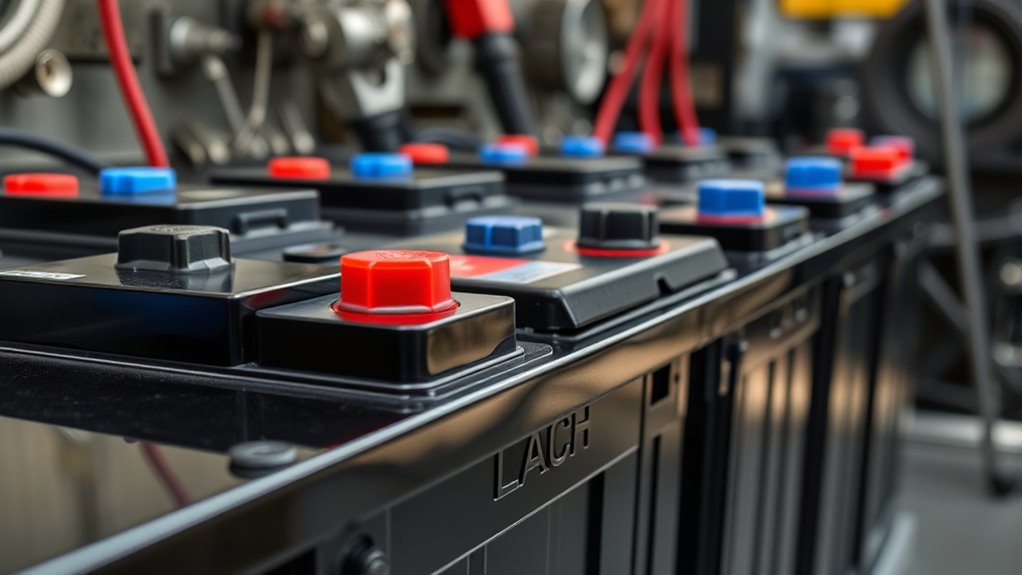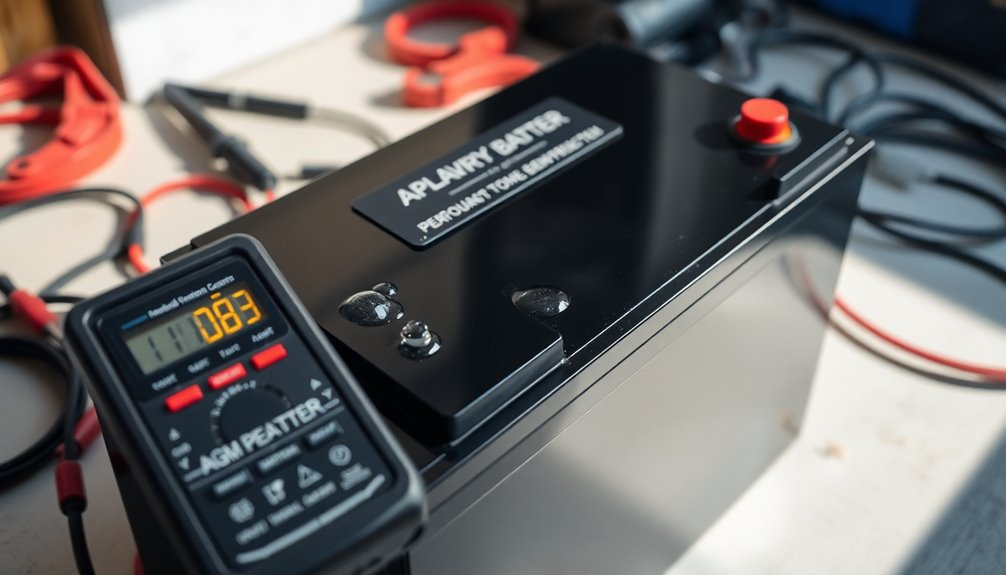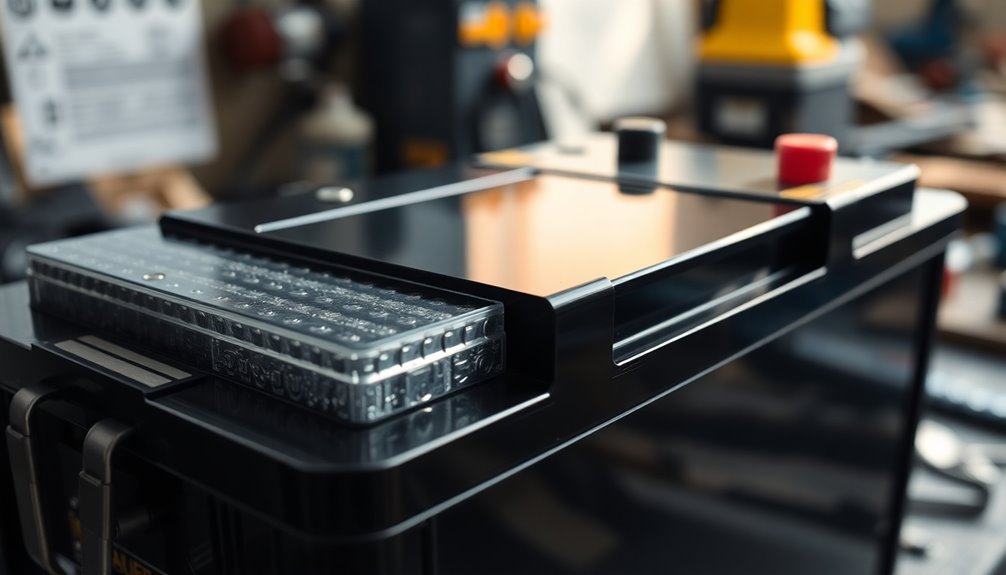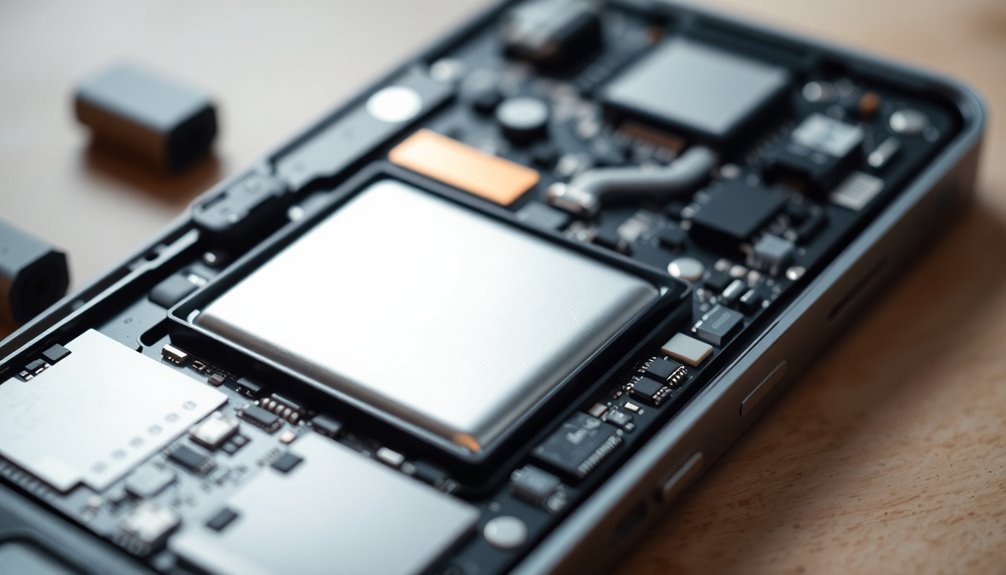Deep-cycle batteries last longer than regular ones because they’re designed for sustained use and proper maintenance. They deliver consistent power over extended periods and can handle multiple deep discharges without damage. Proper charging, avoiding over- or undercharging, and regular inspection help prevent premature wear. When you follow best practices, you’ll enjoy reliable energy and a longer lifespan. Keep exploring to discover how you can maximize their performance even further.
Key Takeaways
- Deep-cycle batteries are designed for sustained, consistent power output over long periods, reducing wear and tear.
- Proper maintenance, like regular charging and terminal cleaning, extends their lifespan compared to standard batteries.
- Multi-stage charging techniques prevent overcharging and overheating, enhancing durability.
- They are built with thicker plates to withstand deep discharges without damage.
- Consistent care and correct usage minimize sulfation and capacity loss, making them last longer than regular batteries.

Deep-cycle batteries are designed to provide sustained power over long periods, making them ideal for applications like renewable energy systems, electric vehicles, and marine equipment. To get the most out of these batteries, proper battery maintenance is essential. You need to keep an eye on their state of charge and ensure they’re stored correctly when not in use. Regular inspections help catch any signs of wear or corrosion early, preventing potential failures down the line. Maintaining clean terminals and checking electrolyte levels (if applicable) can considerably extend their lifespan. Remember, a well-maintained deep-cycle battery performs more reliably and lasts much longer, saving you money and hassle over time.
Charging techniques are equally critical in maximizing the lifespan and performance of your deep-cycle batteries. Unlike regular batteries, deep-cycle types require specific charging protocols to avoid damage and guarantee ideal operation. First, always use a charger compatible with deep-cycle batteries, preferably one with a multi-stage charging process. This includes bulk, absorption, and float stages, which help prevent overcharging and undercharging. When charging, it’s best to do so in a cool, dry environment to avoid overheating, which can deteriorate the battery’s internal components. Never leave your battery partially charged for extended periods, as this can lead to sulfation—a common cause of capacity loss. Additionally, understanding the technology behind deep-cycle batteries can help you better appreciate their design and proper maintenance needs.
It’s also advisable to avoid deep discharges, which can harm your battery’s longevity. Aim to recharge the battery before it drops below 50% capacity. Regularly monitoring voltage levels during charging and discharging gives you a clear picture of the battery’s health. If you notice slow charging or reduced run time, it might be time to check your charging method or consider replacing the battery. Proper charging techniques, combined with diligent battery maintenance, can considerably enhance your deep-cycle battery’s cycle life, ensuring it delivers reliable power when you need it most.
Frequently Asked Questions
How Do Deep-Cycle Batteries Differ From Standard Car Batteries?
You’ll notice that deep-cycle batteries differ from standard car batteries mainly in their construction and discharge rates. Their battery construction allows them to handle sustained, deep discharges without damage, unlike car batteries designed for quick bursts of power. This means you can drain a deep-cycle battery more deeply and repeatedly, making them ideal for renewable energy systems or RVs. Their slower discharge rates also help them last longer under regular use.
What Maintenance Is Required to Maximize Deep-Cycle Battery Lifespan?
You need to keep your eye on the prize when it comes to deep-cycle battery maintenance. To maximize lifespan, follow proper charging practices—avoid overcharging or letting it drain completely. Store it in cool, dry conditions, and keep terminals clean and tight. Regularly check water levels if applicable, and use a quality charger. Doing these simple steps keeps your battery running smoothly—don’t let small issues turn into big problems.
Are Deep-Cycle Batteries Environmentally Friendly and Recyclable?
You’ll find deep-cycle batteries are generally eco-friendly and recyclable. They’re made from eco-friendly materials, reducing environmental harm. When it’s time to replace them, battery recycling programs help prevent hazardous waste and recover valuable materials like lead and plastics. By choosing batteries with proper recycling options, you contribute to environmental sustainability, ensuring these batteries don’t end up in landfills and that their components are reused responsibly.
How Do Temperature Extremes Affect Deep-Cycle Battery Performance?
Temperature extremes considerably impact deep-cycle battery performance through thermal effects. High temperatures can cause increased internal resistance, reducing charge efficiency and risking overheating. Conversely, cold temperatures slow chemical reactions, lowering capacity and charge acceptance. You should store your battery in a moderate environment to minimize thermal effects, ensuring ideal charge efficiency and longevity. Proper temperature management helps maintain consistent performance and extends the life of your deep-cycle battery.
What Are the Best Applications for Deep-Cycle Batteries?
Imagine powering a cabin in the wilderness or running a boat’s electrical system—these are prime applications for deep-cycle batteries. You rely on them for renewable energy setups and off-grid power, where consistent, long-lasting power matters most. Their ability to endure repeated deep discharges makes them ideal for sustainability projects, RVs, and solar energy storage, ensuring your energy needs are met reliably in remote or renewable environments.
Conclusion
Deep-cycle batteries are truly the heartbeat of reliable power. Their durability and long-lasting energy make them the backbone of your adventures and daily needs. Like a trusted friend, they stand strong through thick and thin, ensuring you never lose connection when it matters most. Choosing a deep-cycle battery means investing in peace of mind, knowing your power source will outlast the rest. Let this dependable energy be the steady rhythm of your journey ahead.










